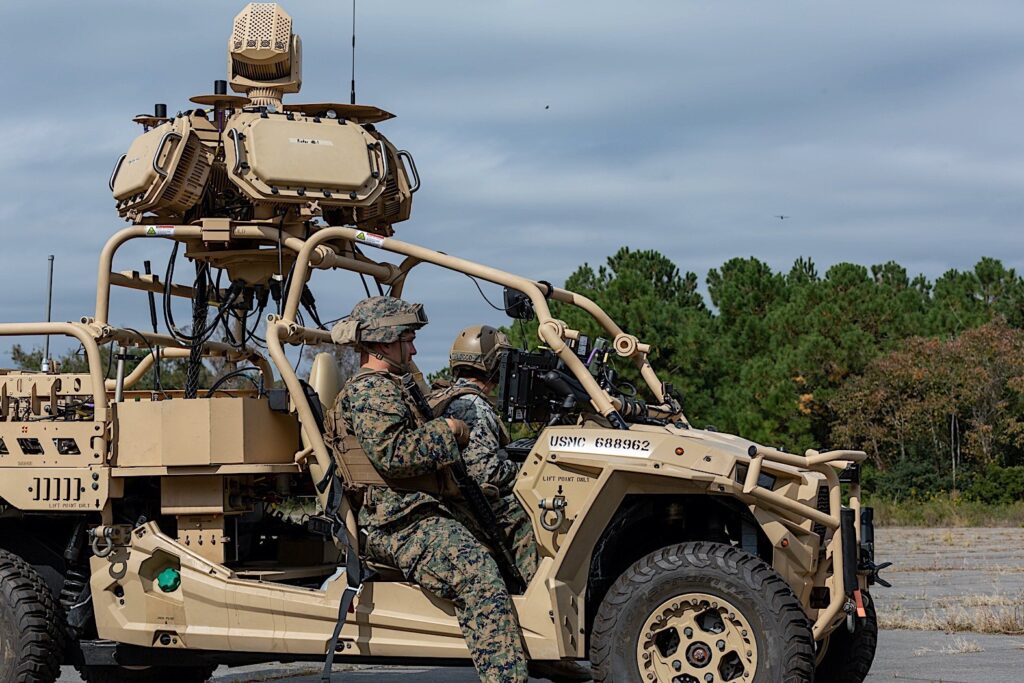The U.S.-Mexico border has taken on a new face not just of wire and steel, but of combat gear, drones, and soldiers now acting as frontline deterrents in a sweeping militarization effort under the Trump administration.
Inside armored vehicles in Arizona’s border hills, U.S. Army scouts like Sgt. Ana Harker-Molina monitor human movement through long-range scopes. On Tuesday, a man attempting to scale the wall into U.S. territory fled back to Mexico after a Border Patrol SUV raced toward the scene. No arrests were made but that, military officials argue, is the point.
“Deterrence is actually boring,” said Harker-Molina, 24, an immigrant from Panama who recently became a U.S. citizen while serving. “But just being here, watching the border, is helping our country.”
This calm-on-the-surface approach now defines the Trump administration’s vastly expanded border mission. With troop deployments tripled to 7,600 encompassing every military branch the operation has morphed into one of the most significant domestic military mobilizations in recent decades.
‘Militarized Zones’ Now Enforce Federal Immigration Law
What began as support to Border Patrol has evolved into a direct enforcement effort. In April, the Department of Defense designated large swaths of the border as “militarized zones,” allowing soldiers to apprehend immigrants, especially those accused of trespassing on military installations. These zones also carry enhanced federal penalties.
At the command hub near the Huachuca Mountains in Arizona, battalion commanders direct operations using real-time maps tracking 117 Stryker armored vehicles, more than 35 helicopters, and drones capable of scanning remote desert and mountainous terrain day and night.
“We can fly people into incredibly remote areas now that we see the cartels shifting routes,” said Maj. Gen. Scott Naumann, who leads the operation. “There’s no labor union. No shift limit. If we need troops in the field for days, we can put them there.”
Marine engineers are simultaneously reinforcing weak points with layers of concertina wire as border wall construction resumes.
Crossing Attempts Plummet, But Strategy Holds
Despite a 60-year low in illegal border crossings, Naumann said the mission remains crucial. “We’re trending positively, but we can’t afford to ease up,” he noted, pointing to the volatile patterns of human smuggling cartels — some now designated foreign terrorist organizations.
The military’s role also includes patrolling key regions like Mt. Cristo Rey near El Paso, now under joint control of Fort Bliss and Fort Huachuca. Soldiers here can detain border-crossers using standard military rules, including use of deadly force if attacked.
Some 360 arrests were made in recent weeks, many involving migrants without legal status. The presence of children and reports of minors working in agriculture have triggered further federal scrutiny.
Civilian Access Blocked; Constitutional Concerns Raised
The use of militarized zones has drawn legal and ethical questions, with critics citing possible violations of the Posse Comitatus Act, which restricts military involvement in civilian law enforcement.
“This is a gray zone,” said law professor and former Air Force judge Joshua Kastenberg. “It may be legal under current frameworks, but it raises serious concerns about militarizing domestic policy.”
Access to popular public lands now restricted under the military designation has sparked protests. Naumann defended the changes, saying civilians can apply for access with background checks the same required for military base entry.
Immigrant Troops Enforcing Immigration Law
Many soldiers in the operation, including Army Spc. Luisangel Nito, are themselves children of immigrants. Nito patrols the same Arizona valleys where his parents once crossed illegally in the 1990s.
“They told me to be careful,” he said, now watching over the same terrain with heat-sensitive scopes and drone-jamming tech. “But I’m doing my job.”
A Political, Legal and Moral Tightrope
The deployment is widely seen as a political show of force aimed at reinforcing Trump’s campaign pledge to “end the border crisis.” Experts say it also reflects growing federal frustration over border policy gridlock in Washington.
“The military’s presence is a force multiplier,” said Michael Fisher, former U.S. Border Patrol chief. “But it’s also a gamble mixing law enforcement and warfighters on U.S. soil.”
Despite the controversy, the operation shows no sign of slowing. With wall construction ramping up and additional zones under consideration in Texas and Arizona, America’s southern border is becoming an increasingly militarized line in the sand patrolled not just by agents, but by soldiers with a battlefield mandate.


